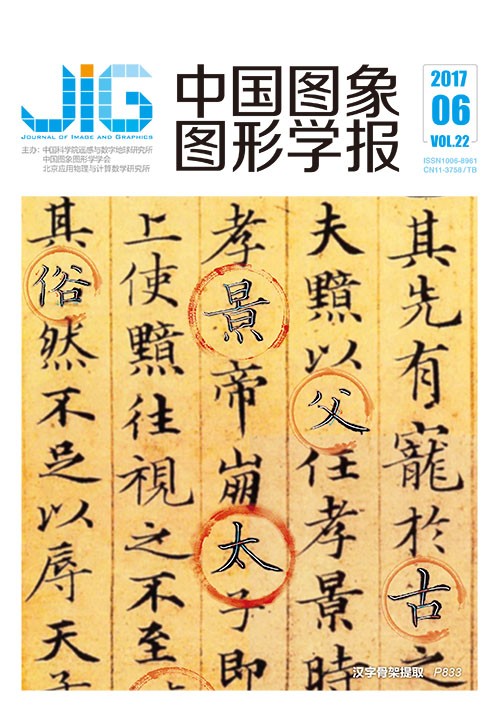
改进权值非局部均值超声图像去噪
摘 要
目的 超声图像斑点噪声会影响诊断的准确性和可靠性。通过分析超声图像斑点噪声统计模型,结合非局部均值滤波算法,提出一种基于超声斑点噪声模型的改进权值非局部均值(NLM)滤波算法。方法 算法针对超声图像灰度信息对图像进行预处理,利用超声图像斑点噪声模型改进传统NLM算法的权值计算函数,基于图像特征确定最优采样间隔进行下采样,利用改进后的权值计算函数对图像进行NLM去噪处理。结果 分别采用人工合成与真实超声图像对本文算法性能进行测试,并与传统非局部均值滤波算法、非局部总变分(NLTV)等算法进行去噪效果比较,同时采用均方误差、峰值信噪比和平均结构相似性作为滤波算法性能的客观评价指标。本文算法能快速完成超声图像的去噪处理,峰值信噪比较其他算法可以提高0.2 dB以上,可以降低均方误差,提高平均结构相似性,缩短处理时间,并得到较好的图像质量和视觉效果。结论 根据超声图像斑点噪声模型对NLM算法的权值计算函数进行优化,使得NLM图像滤波算法能更好地适用于超声图像的去噪,基于超声斑点噪声模型的改进权值NLM算法相较于其他算法,滤波效果更佳,适合超声图像去噪。
关键词
Improved weighted non-local means ultrasonic image denoising algorithm
Zheng Yuanyue, Xu Mingen, Wang Ling(College of Life Information Science and Instrument Engineering, Hangzhou Dianzi University, Hangzhou 310018, China) Abstract
Objective Medical ultrasound imaging, CT, MR, and X-ray imaging are four modern medical imaging techniques. Medical ultrasound imaging techniques are ultrasonic-based diagnostic imaging approaches used to visualize subcutaneous body structures, such as muscles, vessels, tendons, joints, and internal organs. Compared with other imaging techniques, medical ultrasound imaging is widely used in clinical diagnosis, especially in pregnant women and fetuses, because it is non-invasive, inexpensive, convenient, can be applied in real time, and so on. However, due to the influence of the ultrasonic imaging principle, the ultrasonic image is inevitably disturbed by speckle noise during the generation process, which not only reduces the quality of the ultrasonic image but also makes the identification and analysis of the image detail highly difficult. In this study, an improved non-local means (NLM) image denoising algorithm based on the noise model of the ultrasonic image is proposed.Method A statistical model of speckle noise is obtained based on the probability distribution of the ultrasonic image. Then, the Bayesian formula and speckle noise model are utilized to improve the weight function of the NLM filter algorithm. The weight function of the traditional NLM algorithm is based on Gaussian distribution, so it can suppress Gaussian noise well. However, it is unsuitable for speckle noise. In this study, the weight function is improved based on the speckle noise model to make the algorithm applicable to an ultrasonic image. The algorithm preprocesses the image according to the characteristics of the proposed weight function by using a pre-defined threshold. If the average gray value of the image is greater than 155, then the image is processed directly. If the average gray value of the image is less than 100, then the anti-colored image is used for denoising. If the image has an average gray value of 100 to 155, both the original and anti-colored images are processed, and the average of the results is calculated and used as the final result. This step makes the algorithm produce a good denoising effect. Afterward, different sampling intervals are utilized to subsample the image; each sampling interval must be smaller than the similar window size in the NLM algorithm. For each pixel in the sampled block, the filtered value is calculated with the improved NLM algorithm. If a pixel is in the intersection of two sampled blocks, the final estimated value of the pixel is calculated by the weighted average of the filtered values in the two sampled blocks. After all the pixels are calculated, de-speckling performances in terms of filtered time, peak signal-to-noise ratio (PSNR), mean squared error (MSE), and mean structural similarity (MSSIM) at different sampling intervals are analyzed to optimize the sampling interval so that the algorithm can reduce noise while reducing the processing time. Finally, the optimized sampling interval and the improved NLM algorithm are applied to ultrasonic image denoising.Result The search and image window sizes are fixed to 11×11 and 5×5, respectively, in the optimized Bayesian NLM algorithm (OBNLM) algorithm and the proposed algorithm. The optimal sampling interval is fixed to 3 according to the experimental results. Experiments on phantom images and real 2D ultrasound datasets show that the proposed algorithm outperforms other well-accepted methods, including the traditional NLM algorithm, OBNLM, non-local total variation (NLTV) algorithm, and speckle-reducing anisotropic diffusion filter (SRAD), in terms of objective and subjective evaluations (e.g., MSE, PSNR, MSSIM, and computational time). The images filtered with the proposed algorithm have a higher PSNR value than the other de-speckling algorithms, which means the proposed algorithm can preserve the details of the image information better, and the filtered image has similar edges as the noise-free image. Comparison of MSE and MSSIM values indicates that the proposed algorithm has lower MSE values and higher MSSIM values than the others, which means the proposed algorithm can better preserve the structure information of the original image. With regard to computation time, the proposed algorithm does not demonstrate superiority in this aspect, but the speed of the proposed algorithm is almost nine times faster than that of the traditional NLM algorithm. An experiment is also conducted on real 2D ultrasound images, and results show that the proposed algorithm provides a better visual effect than other well-accepted methods.Conclusion Speckle noise reduces the quality of ultrasonic images and limits the development of automatic diagnostic technology. According to the speckle noise model of ultrasonic images, the weight function of the NLM algorithm is optimized to make the algorithm suitable for ultrasonic image denoising. Experimental results show that the proposed algorithm is better than other algorithms and suitable for ultrasonic image denoising.
Keywords
|



 中国图象图形学报 │ 京ICP备05080539号-4 │ 本系统由
中国图象图形学报 │ 京ICP备05080539号-4 │ 本系统由